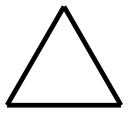Cyclopropan Chemische Eigenschaften,Einsatz,Produktion Methoden
R-S?tze Betriebsanweisung:
R12:Hochentzündlich.
S-S?tze Betriebsanweisung:
S9:Beh?lter an einem gut gelüfteten Ort aufbewahren.
S16:Von Zündquellen fernhalten - Nicht rauchen.
S33:Ma?nahmen gegen elektrostatische Aufladungen treffen.
Beschreibung
Cyclopropane (molecular formula: C3H6) is a kind of cycloalkane molecule. Cyclopropane and propene are isomers of each other. It can be used as a kind of anaesthetic. However, due to its side effect of causing a sudden decrease in blood pressure and potentially causing cardiac dysrhythmia, it has not been available for clinical use since mid-1980 as more. Its mechanism of action is through acting as the NMDA receptor antagonist as well as inhibiting the AMPA receptor, inhibiting the nicotine acetylcholine receptor, and activates certain K2P channels.
Chemische Eigenschaften
Cyclopropane is a colourless gas, C3H6, b.p. –34.5°C, whose moleculescontain a triangular ring of carbonatoms. It is made by treating 1,3-dibromopropanewith zinc metal, andis used as a general anaesthetic.
Verwenden
Cyclopropane was initially investigated because it was thought to be the toxic element in ethylene. Instead, it turned out to be an excellent anesthetic with very rapid onset and recovery while maintaining stable hemodynamics. Its use was ultimately limited because it was highly explosive. Cyclopropane is a sweet-smelling, flammable gas that has little or no laboratory, commercial, or industrial use.
Definition
ChEBI: Cyclopropane is a cycloalkane composed of three carbon atoms to form a ring. It has a role as an inhalation anaesthetic. It is a cycloalkane and a member of cyclopropanes.
Vorbereitung Methode
Cyclopropane is prepared in reagent grade by the reduction
of 1,2-dibromocyclopropane with zinc and alcohol.
Allgemeine Beschreibung
Cyclopropane is a colorless gas with a petroleum-like odor. It is shipped as a liquid at 4-6 atms. It is easily ignited. The vapors are heavier than air. Contact with the liquid may cause frostbite. It can asphyxiate by the displacement of air and has a narcotic effect in high concentration (formerly used as an anesthetic gas). Under prolonged exposure to fire or intense heat the containers may rupture violently and rocket.
Air & Water Reaktionen
Highly flammable. Insoluble in water.
Reaktivit?t anzeigen
CYCLOPROPANE is incompatible with strong oxidizing agents such as nitric acid. Boiling of the liquid and charring may occur followed by ignition of remaining material and other nearby combustibles. Adsorbed readily by concentrated sulfuric acid [Merck]. In other settings, mostly unreactive. Not affected by aqueous solutions of acids, alkalis, most oxidizing agents, and most reducing agents. When heated sufficiently or when ignited in the presence of air, oxygen or strong oxidizing agents, burns exothermically to produce carbon dioxide and water. Mixtures with oxygen or air may explode [Merck]. Contact of the cold liquefied gas with water may result in vigorous or violent boiling and extremely rapid vaporization due to the large temperature differences involved. If the water is hot, a liquid "superheat" explosion may occur. Pressures may build to dangerous levels if the liquid contacts water in a closed container, [Handling Chemicals Safely, 1980. p. 250].
Health Hazard
Inhalation causes some analgesia, anesthesia, pupil dilation, shallow depth of respirations, decreasing muscle tone. Contact with liquid may cause frostbite.
Brandgefahr
EXTREMELY FLAMMABLE. Will be easily ignited by heat, sparks or flames. Will form explosive mixtures with air. Vapors from liquefied gas are initially heavier than air and spread along ground. CAUTION: Hydrogen (UN1049), Deuterium (UN1957), Hydrogen, refrigerated liquid (UN1966) and Methane (UN1971) are lighter than air and will rise. Hydrogen and Deuterium fires are difficult to detect since they burn with an invisible flame. Use an alternate method of detection (thermal camera, broom handle, etc.) Vapors may travel to source of ignition and flash back. Cylinders exposed to fire may vent and release flammable gas through pressure relief devices. Containers may explode when heated. Ruptured cylinders may rocket.
Sicherheitsprofil
Mutation data reported.
Questionable carcinogen. High
concentrations are narcotic. Human
reproductive effects. Very dangerous fire
hazard when exposed to heat or flame; can
react with oxidizing materials. Explosion
Hazard: Moderate in the form of vapor
when exposed to heat or flame. To fight
fire, stop flow of gas, then use CO2, dry chemical, or water spray. When heated to
decomposition it emits acrid smoke and
fumes.
m?gliche Exposition
Cyclopropane is used as an anesthetic
and used to make other chemicals.
Versand/Shipping
UN1027 Cyclopropane, Hazard Class: 2.1;
Labels: 2.1-Flammable gas. Cylinders must be transported
in a secure upright position, in a well-ventilated truck.
Protect cylinder and labels from physical damage. The
owner of the compressed gas cylinder is the only entity
allowed by federal law (49CFR) to transport and refill
them. It is a violation of transportation regulations to refill
compressed gas cylinders without the express written per-
mission of the owner.
l?uterung methode
Wash cyclopropane with a solution of HgSO4 and dry it with CaCl2, then Mg(ClO4)2. It is an anaesthetic FLAMMABLE gas and is packaged in steel cylinders. [Rifi Org Synth Coll 52 22 1972, Simmons & Smith J Am Chem Soc 80 5323 1958, Beilstein 5 H 15.]
Inkompatibilit?ten
May form explosive mixture with air.
Heat, flame, or contact with oxidizers can cause fire and
explosion hazard. May accumulate static electrical charges,
and may cause ignition of its vapors. Incompatible with
oxidizers (chlorates, nitrates, peroxides, permanganates,
perchlorates, chlorine, bromine, fluorine, etc.); contact may
cause fires or explosions. Keep away from alkaline materi-
als, strong bases, strong acids, oxoacids, epoxides.
Waste disposal
Return refillable compressed
gas cylinders to supplier.
Einzelnachweise
https://en.wikipedia.org/wiki/Cyclopropane
Cyclopropan Upstream-Materialien And Downstream Produkte
Upstream-Materialien
Downstream Produkte









